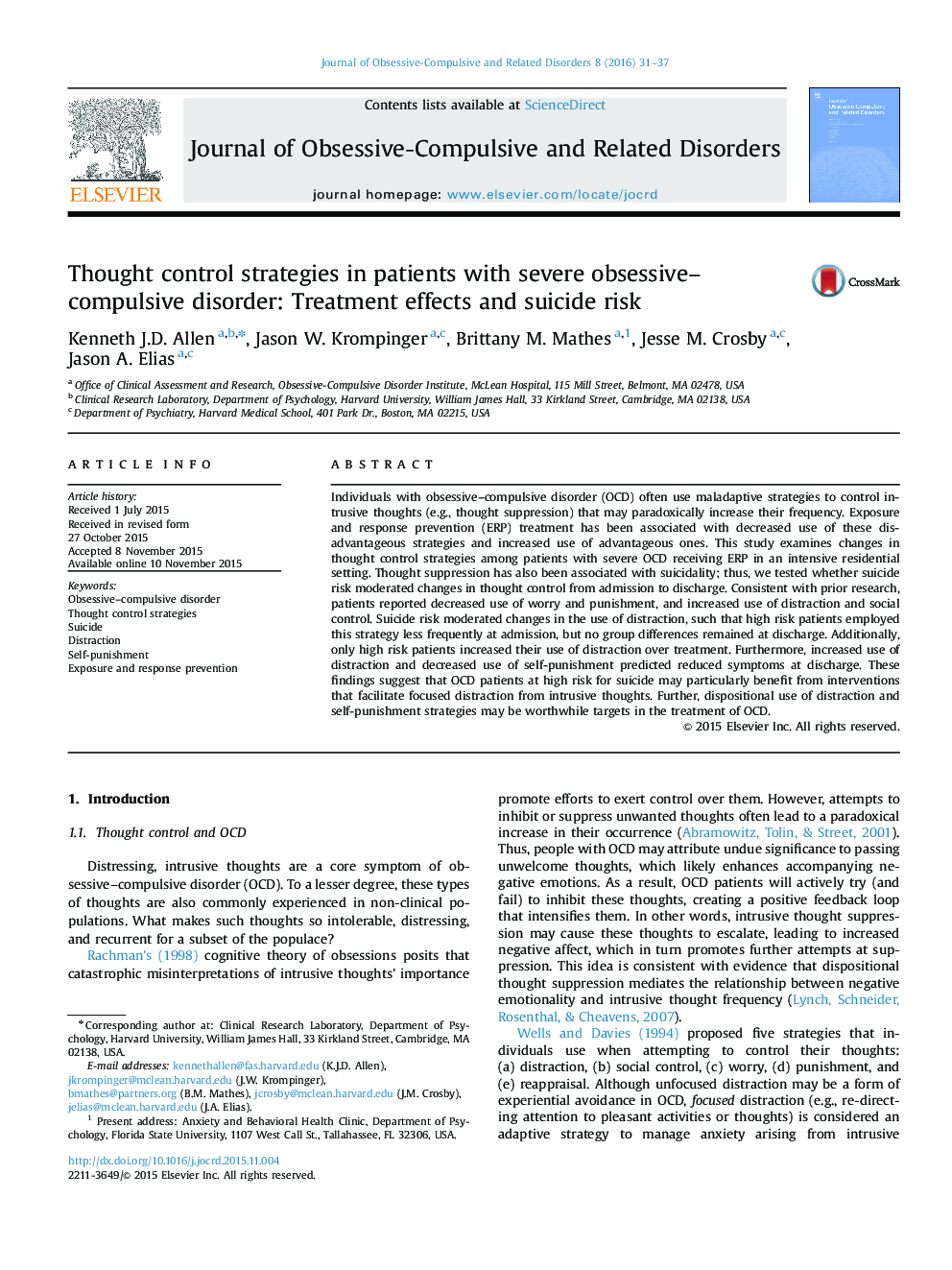| Article ID | Journal | Published Year | Pages | File Type |
|---|---|---|---|---|
| 7269159 | Journal of Obsessive-Compulsive and Related Disorders | 2016 | 7 Pages |
Abstract
Individuals with obsessive-compulsive disorder (OCD) often use maladaptive strategies to control intrusive thoughts (e.g., thought suppression) that may paradoxically increase their frequency. Exposure and response prevention (ERP) treatment has been associated with decreased use of these disadvantageous strategies and increased use of advantageous ones. This study examines changes in thought control strategies among patients with severe OCD receiving ERP in an intensive residential setting. Thought suppression has also been associated with suicidality; thus, we tested whether suicide risk moderated changes in thought control from admission to discharge. Consistent with prior research, patients reported decreased use of worry and punishment, and increased use of distraction and social control. Suicide risk moderated changes in the use of distraction, such that high risk patients employed this strategy less frequently at admission, but no group differences remained at discharge. Additionally, only high risk patients increased their use of distraction over treatment. Furthermore, increased use of distraction and decreased use of self-punishment predicted reduced symptoms at discharge. These findings suggest that OCD patients at high risk for suicide may particularly benefit from interventions that facilitate focused distraction from intrusive thoughts. Further, dispositional use of distraction and self-punishment strategies may be worthwhile targets in the treatment of OCD.
Keywords
Related Topics
Health Sciences
Medicine and Dentistry
Psychiatry and Mental Health
Authors
Kenneth J.D. Allen, Jason W. Krompinger, Brittany M. Mathes, Jesse M. Crosby, Jason A. Elias,
